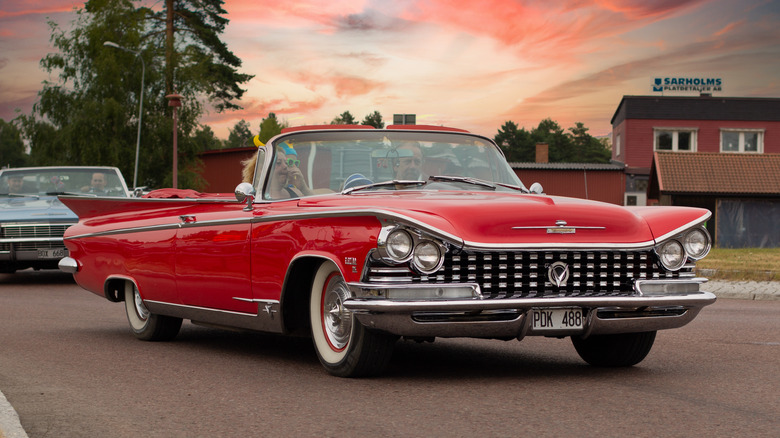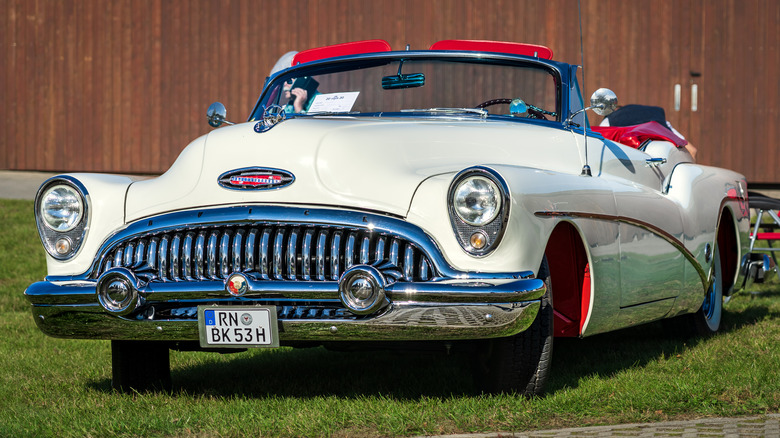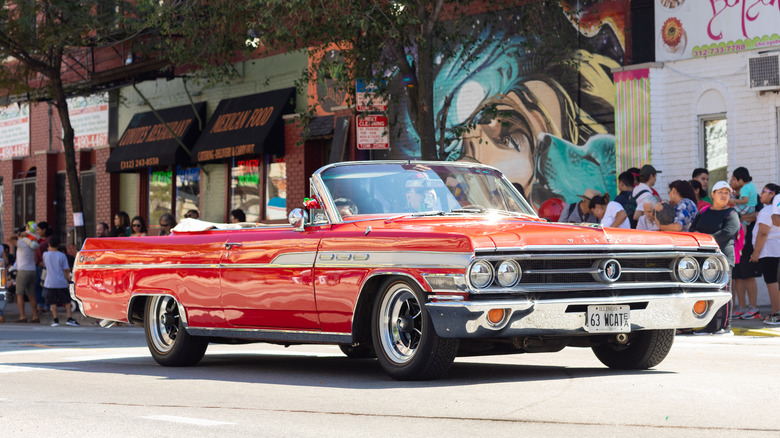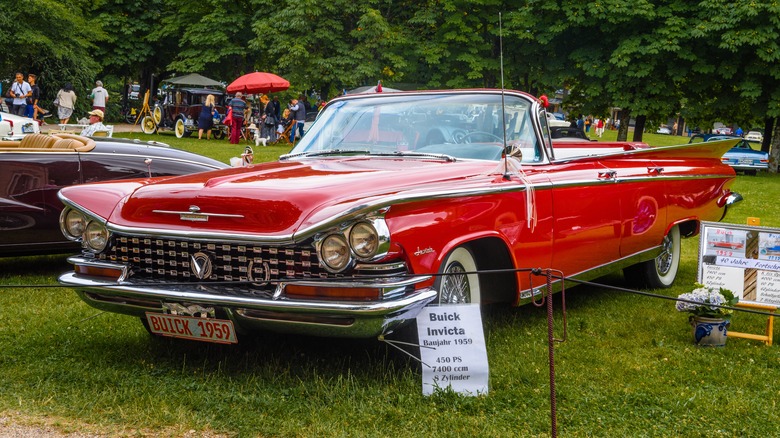5 Underrated Buick Muscle Cars Every Car Enthusiast Should Know
Buick was founded in 1899 by David Dunbar Buick, incorporated in 1903, and that same year moved its headquarters from Detroit, Michigan, to Flint. The following year, Buick almost went bankrupt, but by 1908 had overtaken Cadillac and Ford to become the nation's top-selling automaker. General Motors was originally formed as a holding company for Buick's assets, and Buick's 120 years in business make it the nation's longest-continuously operating carmaker.
Buick was the first auto manufacturer to move the valvetrain from the engine block to the cylinder head, establishing the overhead valve system that became the basis for the overhead cam engines found in most cars today. During its century-plus of producing cars, Buick has been responsible for luxury nameplates like the Riviera, the Skylark, and the LeSabre. During the muscle car boom of the 1960s and '70s, Buick also produced some cars that fit squarely into that category, but Buick's muscle car models weren't as coveted as some of the more popular and highly valued muscle cars of the era. Let's take a look at a handful of the muscle cars that Buick produced and examine why they are underappreciated by collectors today.
Roadmaster
The Roadmaster first appeared in 1936, and Buick introduced new generations of the model throughout the '40s and '50s. The last version stayed in production for two years, after which the nameplate remained dormant until an eighth generation was reintroduced for the 1991-1996 model years. Early generation Roadmasters were available in coupe, sedan, convertible, and wagon form and were powered by one of two 5.2 eight-cylinder engines; inline and V8 versions that were both offered in the sixth generation, which ran from 1954 through 1956.
1957 and 1958 models got a 6.0 liter V8 that produced more than 300 horsepower and nearly 400 lb-ft of torque. The 1958 Roadmaster was the last one to get the model's classic styling; the 1990s edition Roadmaster had a unique oval shape that was common to the sedan and station wagon body styles. The wagon got three rows of seats and woodgrain paneling, but those suburban-friendly features masked a beastly potential hiding underneath the Roadmaster's skin; the 1996 model had a 5.7 liter V8 that put out 260 horsepower and 330 lb-feet of torque.
Martyn Schorr, who handled public relations for Buick at the time, told Car and Driver the Roadmaster was not to be trifled with. "Those were serious road warriors — complex, quick, and fast," he said. "Everything was custom, including the four-wheel Brembo disc brakes, fuel-injection systems, and NASCAR-type coolers for transmission, the engine, and the rear end."
Special
The Special is another Buick model with a beginning in the 1930s and a fragmented production history. Like the Roadmaster, it debuted in 1936, and that first generation remained in production through 1949. First-generation Specials got either a 3.8 or 4.1-liter inline 8-cylinder engine, and with the first update in 1949 came an array of new inline 8 and V8 options. That second generation stayed in production until 1958, after which the nameplate sat idle. The third generation appeared from 1961 through 1963. The final generation that ran from 1964 through 1969 came in sedan, coupe, and convertible versions and offered buyers a choice between a 225 cubic inch V6 and two 300-inch V8s, the stronger of which produced 250 horsepower.
Changes to the Special's styling and bigger engines came in 1966 and 1968; for the final two years of production, the Special was available with a 250 cubic inch I6 or a 350 cubic inch V8.
Even though it weighed more than 3,500 pounds, the 1968 Special could get from 0-60 in 8.4 seconds and crest the 100 mph mark.
Wildcat
Perhaps one of the coolest muscle car model names ever bestowed on a vehicle is the Wildcat, a nameplate Buick first used on a series of 1950s concept cars before applying it to a production model coupe version of the Invicta in 1962. The Wildcat was split off into its own model the following year and got two new variations: a convertible and a four-door sedan. 401 and 425 cubic inch V8s were offered initially; the larger engine provided 340hp or 360hp depending on which carburetor the buyer selected. For 1966 only, Buick issued a GS (Grand Sport) Performance package with dual exhausts, an upgraded suspension, and a posi-traction rear axle. Only 1,244 GS Wildcats came off the assembly line, just 22 of which had the 360 horsepower dual-quad "Super Wildcat" carburetor option.
1969 saw some styling changes and the introduction of a 430 cubic inch V8 that produced 360 horsepower. The Wildcat got 15 more cubic inches and 10 additional horses under the hood the following year.
Invicta
The Invicta was introduced in 1959 as a replacement for the Century and came as a sedan, convertible, or station wagon. Under the hood was a 401 cubic inch V8 that produced 325 horsepower, and on the outside were dramatic fins that ran the entire car length. A third row of seats was added to the wagon in 1960, and the fins were trimmed back a bit, but the Invicta retained its low-slung appearance and powerful V8. The jet-age Invicta remained in production through 1963, but Buick brought the name back in 2007 and applied it to a concept car it displayed at the Beijing Auto Show.
According to Car and Driver, that model was "believed to be a look at the next-generation LaCrosse," and Buick is not likely to use the Invicta name on a production car in the near future.
Like Buick's other muscle car offerings, '60's era Invictas are often neglected in conversations centered on more popular models like the Chevrolet Corvette and Ford Mustang.
Production and sales numbers were also low compared to other GM muscle cars of the era: Buick made fewer than 30,000 Invictas for the 1961 model year, and production of the model peaked at less than twice that number the following year (in contrast, Chevy sold almost 500,000 1961 Impalas).
Electra
Another Buick model that debuted in 1959 with sweeping Space Age lines and dramatic body-length fins was the Electra, which remained in production over six generations until 1990. The debut of the Electra spelled the end for the original design of the Roadmaster; the new model was named after Electra Waggoner Biggs, former GM President Harlow Curtice's sister-in-law.
The first generation Electra was available in coupe, convertible, and sedan forms, and a bigger Electra 225 variant was also offered, so named for its 225-inch body length. The first two generations of Electra were powered by a 6.6 liter V8 that cranked out 330 horsepower. Beginning in 1962, Buick only sold the 225 version of the Electra, and the fourth generation that appeared in 1971 brought with it two new engine options: 5.7 liter and 7.5 liter V8s, the latter of which produced as much as 251 horsepower.
The mid-'70s oil crisis forced a momentary downsizing of the Electra's engines and body, but '80s models saw a return of motors as big as the first generation Electra's 403 cubic inches(6.6 liters) and a body weight that swelled back up to 3,900 pounds. As it did with the Invicta, Buick recently brought back the Electra nameplate for a Beijing Auto Show concept car, this time in 2020.





